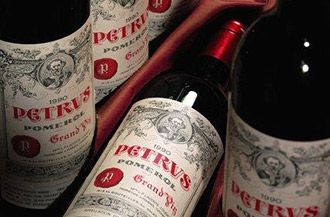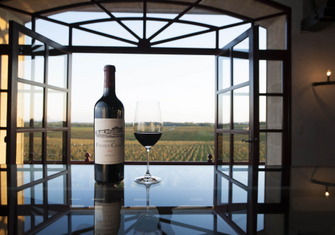The drinking window of a fine wine is an important factor for wine investors as it sets indicative time parameters for important milestones in drinking quality and changes in demand and supply of fine wine.
What do we mean by ‘wine drinking window’?
A fine wine’s drinking window is the optimum period during which a wine is judged to be at the peak of its maturity and at its very best to drink. The ability of a wine to improve in quality as it ages is dependent upon the grape varietal, vintage conditions, the wine making process and storage conditions.
The vast majority of wine is not made to age, in fact 90% of global supply is meant to be drunk within one year, and 99% within 5 years. Less than 1% is fine wine which can age and improve beyond 5 years, and the best of these are Investment Grade Wine.
Probably the most important characteristic of investment-grade wine is their longevity and that they do improve as they mature over time. Once they enter their drinking window and start being consumed they become even rarer and more valuable. Anyone that has wine investments need to be aware of the Wine Drinking Window to ensure optimum price performance as wines eventually pass their peak and only iconic extremely rare wines will still continue to grow in price a long time after a predicted drinking window ends.
Factors which influence ageing ability:
- Grape varietals with a greater capacity to age
- Wines with a low PH and high levels of phenolics such as tannins age well
- Barrel fermentation and oak ageing also allows phenols to be absorbed into the wine improving ageing potential.
- Vintage conditions
- Storage conditions particularly temperature and humidity
| Grapes with ageing capacity | Average age to improve in bottle |
| Cabernet Franc | 5 – 15 years |
| Cabernet Sauvignon | 5 – 20 years |
| Merlot | 3 – 20 years |
| Pinot Noir | 3 – 15 years |
| Nebbiolo | 12 – 28 years |
| Sangiovese | 10 – 25 years |
The finest red wines of Bordeaux, Burgundy, Rhone, Tuscany, California, Spain and Australia are renowned for their ageing ability and command the highest values.
Sparkling wines are very rarely aged and are generally released ready to drink, as a rule they do not normally benefit from ageing. However, some vintage Champagnes may be aged due to the acidity in the wine and these are of interest for wine investments.
Sauternes wines which are exposed to Botrytis Cinerea, referred to as Noble Rot, the most famous of which being Chateau d’Yquem. This natural process results in a carefully managed state where the wine becomes botrytized, producing especially fine dessert wines which age extremely well.
Download Our Free Wine Investment Guide
What happens as a wine matures?
As a wine starts to mature its bouquet will become more developed and multi-layered. The investment-grade wines we focus on are more complex and will develop several distinct elements to their aroma and taste, which could be various fruits, minerals, earthy, floral and oak derived notes. The finish of the wine will also lengthen with age. There will come a point of maturity when the wine is described as being at its ‘peak’. This is when it has achieved the maximum amount of complexity, the most satisfying mouthfeel and the tannins are softening but have not yet started to decay.
The process of maceration during wine-making is where the tannins (phenolic particles) within the grapes are leached from the skins, seeds and stems into the must. Greater extraction during maceration can add to the ageing properties of a wine by the development of more complex tannins that will soften over a longer period of time.

How storage influences ageing and drinking windows
Storage is also key in regards to ageing and drinking windows. In general, a wine has a greater potential to develop complexity if allowed to age in a relatively cool environment. The lower the temperature, the more slowly a wine develops. Wine being stored to age should be kept at a constant temperature of about 13°C. Temperature variations should be avoided, as well as direct sunlight which results in the development of free radicals and the premature oxidation of the wine. Large formats such as magnums, jeroboams and larger, allow wine to generally age slower, and possibly extend drinking windows.
How is a drinking window determined?
The exact point of a wine’s ‘peak’ is not predictable but winemakers and professional industry critics have the expertise and experience to provide guidelines on a wine’s drinking windows. Robert Parker Jnr, probably still the world’s most influential critic, was the first to provide a prolific guide on wine for consumers. His tasting notes included drinking windows from an early stage and are published via his Wine Advocate.
Coates Law of Maturity (established by Clive Coates MW) is used in wine tastings and to determine an approximate guide to the ageing ability of a wine. The principle is that a wine will generally remain at its peak drinking quality for a period of time equal to that of the time of maturation required to reach optimal quality. This is applied as a general indicator, but the market is in the main guided by the winemakers and the key industry critics.
Fine wine investors must therefore consider a wine’s drinking window before buying in terms of the time they wish to hold their wine and then at a strategically beneficial time to sell to achieve optimum price growth which may reflect increasing rarity but with still sufficient time within a drinking window to be certain of the wine still being of optimum quality to drink. Given two bottles of 1945 Domaine de la Romanee Conti, Romanee Conti were sold at auction in October 2018 for around £400,000 each, predicted drinking windows are in some extreme cases for iconic fine wines not always the most important consideration.
For more information on wine drinking windows for wine you own or are considering contact our expert team now on 0203 384 2262.

